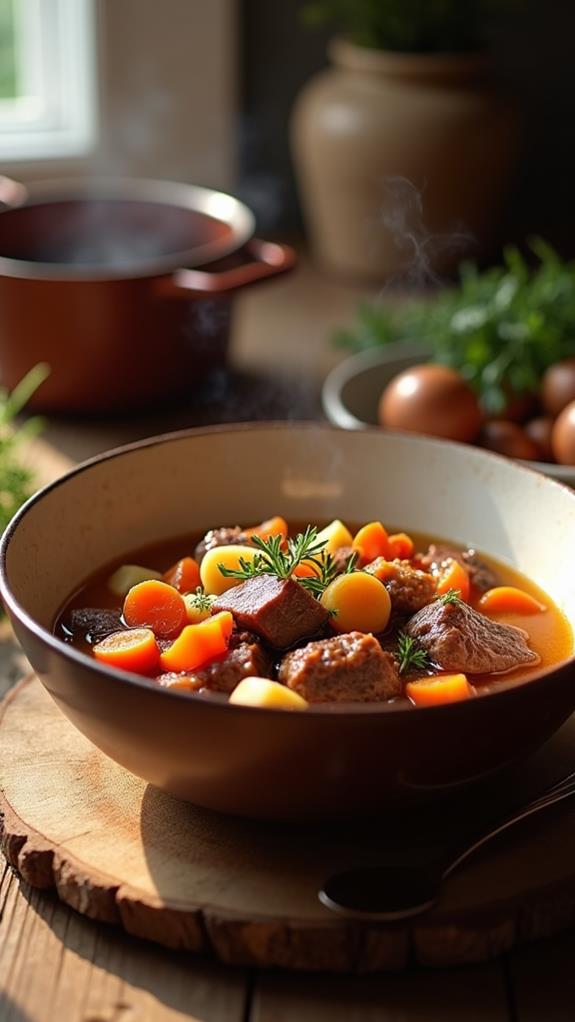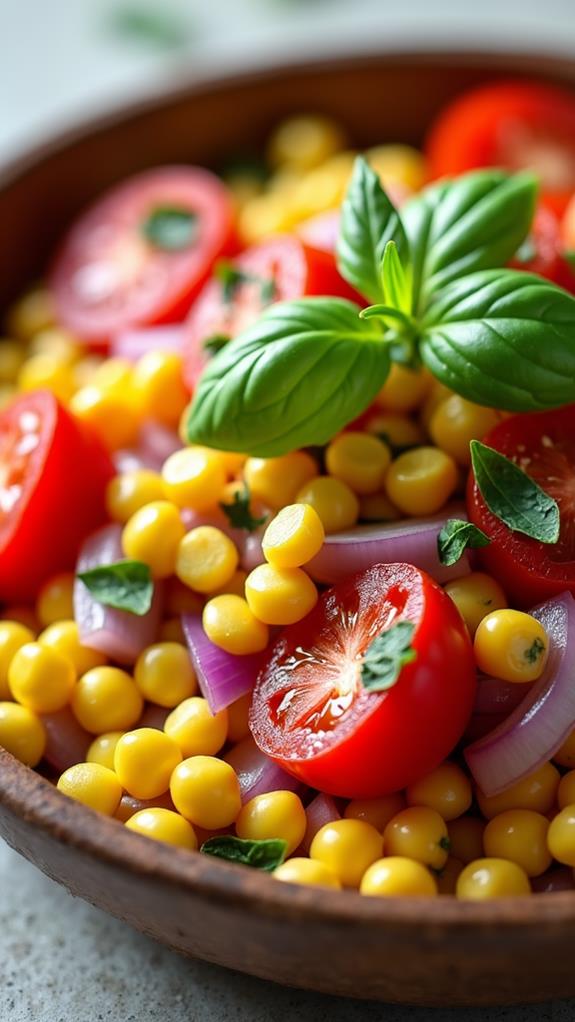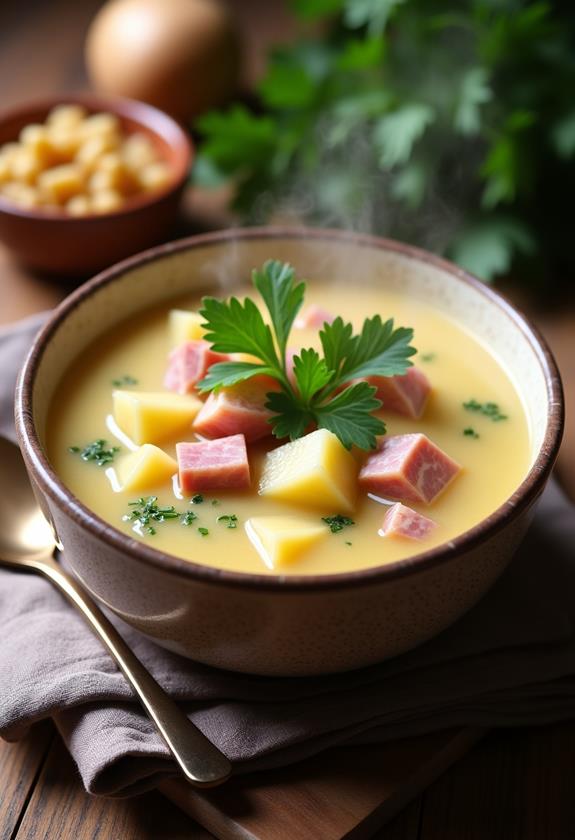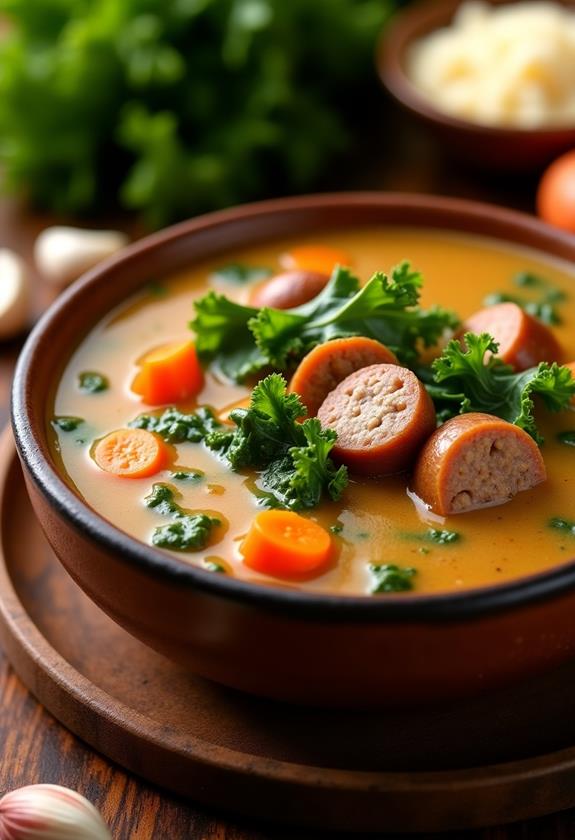German Potato Soup Recipe

There’s something incredibly comforting about a bowl of authentic German Potato Soup on a chilly day. This hearty, soul-warming dish brings together simple ingredients to create a creamy, satisfying meal that’s been cherished in German households for generations.
With its rich, velvety texture and robust flavors, this traditional soup transforms humble potatoes into something truly special. Follow this tried-and-true recipe to create a bowl of pure comfort that will transport you straight to a cozy German kitchen.
What is “German Potato Soup”?
German Potato Soup, known as “Kartoffelsuppe” in Germany, is a beloved traditional dish that showcases the versatility of potatoes. This hearty soup typically features a creamy base loaded with tender potatoes, aromatic vegetables, and often includes smoky bacon or ham for added depth of flavor.
Unlike other potato soups, German Potato Soup is known for its rustic texture – some potatoes are left chunky while others are mashed to create the perfect creamy consistency. The soup is traditionally seasoned with herbs like marjoram, bay leaves, and fresh parsley, giving it a distinctive European flavor profile that’s both comforting and satisfying.
This versatile dish can serve as a starter or a complete meal, and it’s particularly popular during the colder months when its warming properties are most appreciated.
Ingredients List for German Potato Soup
- 2 pounds Yukon Gold potatoes, peeled and cubed
- 6 slices thick-cut bacon, chopped
- 1 large onion, diced
- 2 celery stalks, diced
- 2 medium carrots, diced
- 3 cloves garlic, minced
- 3 tablespoons all-purpose flour
- 6 cups chicken broth (or vegetable broth)
- 1 cup heavy cream
- 2 bay leaves
- 1 teaspoon dried marjoram
- ½ teaspoon dried thyme
- Salt and black pepper to taste
- 2 tablespoons fresh chives, chopped
- 2 tablespoons fresh parsley, chopped
- 2 tablespoons butter
How to Cook German Potato Soup: A Step-by-Step Guide
Creating the perfect German Potato Soup requires patience and attention to detail. Here’s my comprehensive guide to ensure your soup turns out rich, creamy, and absolutely delicious:
1. Prepare the Base:
- In a large, heavy-bottomed pot or Dutch oven, cook the chopped bacon over medium heat until crispy and golden brown.
- Remove the bacon with a slotted spoon and set aside, leaving the rendered fat in the pot.
- The bacon fat will provide incredible flavor to your soup base.
2. Sauté the Vegetables:
- Add the diced onion to the bacon fat and cook for 3-4 minutes until softened and translucent.
- Add the celery and carrots, cooking for another 3-4 minutes until they begin to soften.
- Stir in the minced garlic and cook for 30 seconds until fragrant.
3. Create the Roux:
- Sprinkle the flour over the vegetables and stir constantly for 2 minutes.
- This creates a roux that will help thicken your soup and prevent any lumpy texture.
- Make sure the flour is fully incorporated and doesn’t stick to the bottom of the pot.
4. Add Liquids and Potatoes:
- Gradually whisk in the chicken broth, ensuring no lumps form.
- Add the cubed potatoes, bay leaves, marjoram, and thyme.
- Bring the mixture to a boil, then reduce heat and simmer for 20-25 minutes until potatoes are fork-tender.
5. Create the Perfect Texture:
- Remove about half of the potatoes and vegetables with a slotted spoon.
- Mash these removed ingredients with a potato masher or fork, leaving some chunks for texture.
- Return the mashed mixture to the pot – this creates the signature German Potato Soup consistency.
6. Finish with Cream:
- Stir in the heavy cream and butter, mixing until well combined.
- Season with salt and pepper to taste.
- Remove the bay leaves and add half of the crispy bacon back to the soup.
- Simmer for 5 more minutes to allow flavors to meld.
7. Serve and Garnish:
- Ladle the soup into bowls and top with remaining crispy bacon.
- Garnish with fresh chives and parsley for color and freshness.
- Serve immediately while hot and creamy.
Substitutions and Variations
German Potato Soup is wonderfully adaptable to different dietary needs and preferences. Here are some variations I recommend:
- Potatoes: Russet potatoes work well if Yukon Gold isn’t available, though they’ll create a slightly different texture.
- Meat Options: Replace bacon with diced ham, German sausage (bratwurst), or omit entirely for a vegetarian version.
- Dairy-Free: Substitute heavy cream with coconut milk or cashew cream for a lighter, dairy-free alternative.
- Broth: Vegetable broth works perfectly for vegetarian versions, while beef broth adds even more richness.
- Vegetables: Add leeks instead of onions for a milder flavor, or include diced turnips for traditional German flair.
- Herbs: Fresh dill or sage can replace marjoram for different flavor profiles.
Common Mistakes to Avoid
When making German Potato Soup, avoid these common pitfalls to ensure perfect results every time:
- Overcooking Potatoes: Watch your potatoes carefully; overcooked potatoes will break down too much and create a gluey texture.
- Skipping the Roux: The flour step is crucial for proper thickening; don’t skip this or your soup may be too thin.
- Adding Cream Too Early: Always add cream at the end to prevent curdling when the soup is too hot.
- Not Seasoning Gradually: Taste and adjust seasonings throughout the cooking process, especially after adding the cream.
- Using the Wrong Potato: Waxy potatoes like red potatoes don’t work as well for this soup; stick with Yukon Gold or Russet.
How to Serve German Potato Soup
German Potato Soup makes an excellent main course when paired with crusty German bread or warm dinner rolls. I love serving it alongside a simple mixed green salad with a light vinaigrette to balance the richness of the soup.
For a truly authentic German experience, serve it with pumpernickel bread and a cold German beer. The soup also pairs beautifully with sauerkraut or pickled vegetables, which cut through the creamy richness and add a pleasant acidic contrast.
Consider serving smaller portions as a starter before a hearty German meal featuring schnitzel or sauerbraten.
Presentation Ideas for German Potato Soup
To make your German Potato Soup as visually appealing as it is delicious, try these presentation ideas:
- Rustic Bowl Service: Serve in thick, ceramic bowls that retain heat and give an authentic, homey appearance.
- Garnish Artfully: Create a pattern with the chopped chives and parsley, or arrange crispy bacon pieces in an attractive design.
- Bread Accompaniment: Serve with a small basket of assorted German breads, including pretzel rolls or dark rye.
- Color Contrast: A dollop of sour cream or a drizzle of good olive oil adds visual interest and extra flavor.
German Potato Soup Recipe Tips
Here are my best tips for making exceptional German Potato Soup every time:
- Quality Ingredients: Use high-quality bacon and fresh herbs whenever possible – they make a noticeable difference in flavor.
- Potato Preparation: Cut potatoes into uniform pieces to ensure even cooking throughout the soup.
- Patience with Vegetables: Take time to properly sauté your vegetables; this builds the flavor foundation of your soup.
- Texture Control: Adjust the thickness by mashing more or fewer potatoes, depending on your preference.
- Make Ahead: This soup actually improves in flavor when made a day ahead; just add extra broth when reheating if needed.
- Bacon Timing: Cook bacon until properly crispy; undercooked bacon will become chewy in the soup.
How to Store German Potato Soup
Allow your German Potato Soup to cool completely before storing (within 2 hours of cooking). Transfer to airtight containers and refrigerate for up to 4 days. The soup may thicken considerably when cold, so add additional broth or cream when reheating.
When reheating, do so gently over low heat, stirring frequently to prevent scorching. Add liquid gradually until you reach your desired consistency. The soup can be frozen for up to 3 months, though the texture may change slightly due to the cream and potatoes.
Frequently Asked Questions (FAQs)
Q: Can I make German Potato Soup in a slow cooker?
A: Yes! Brown the bacon and vegetables first, then transfer everything except the cream to a slow cooker. Cook on low for 6-8 hours, then stir in cream during the last 30 minutes.
Q: Why is my soup too thin?
A: If your soup is too thin, mix 2 tablespoons of cornstarch with cold water to create a slurry, then stir it into the simmering soup. Alternatively, mash more potatoes for natural thickening.
Q: Can I use instant potatoes to thicken the soup?
A: While possible, I don’t recommend this as it can create an artificial texture. Stick with real potatoes for the best results.
Q: How do I prevent the cream from curdling?
A: Always add cream to soup that’s just simmering, not boiling. Remove the pot from heat temporarily when adding cream, then return to low heat.
Q: Can I make this soup vegan?
A: Absolutely! Omit the bacon, use vegetable broth, and substitute coconut milk or cashew cream for the heavy cream. Add smoked paprika for depth of flavor.
Q: What’s the best way to reheat leftover soup?
A: Reheat gently on the stovetop over low heat, stirring frequently. Add broth or milk as needed to restore the original consistency.
Conclusion
German Potato Soup represents the best of comfort food – simple ingredients transformed into something extraordinary through traditional cooking techniques. This hearty, satisfying soup brings warmth to any table and creates lasting memories for everyone who enjoys it.
Whether you’re looking to explore German cuisine, need a comforting meal on a cold day, or want to impress guests with an authentic European dish, this recipe delivers on all counts. The combination of creamy potatoes, smoky bacon, and aromatic herbs creates a symphony of flavors that’s both familiar and exciting.
Take your time with each step, use quality ingredients, and don’t be afraid to adjust seasonings to your taste. This soup is forgiving and adaptable, making it perfect for both novice and experienced cooks. Serve it with pride, knowing you’ve created a dish that honors centuries of German culinary tradition while satisfying modern appetites. Guten Appetit!






